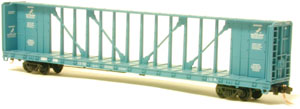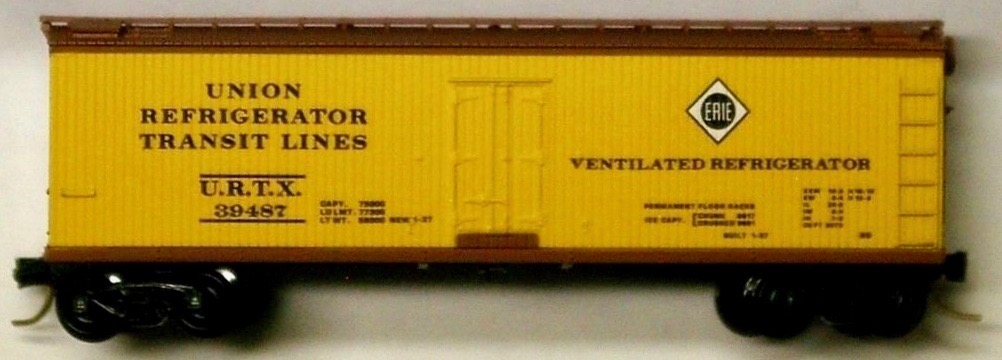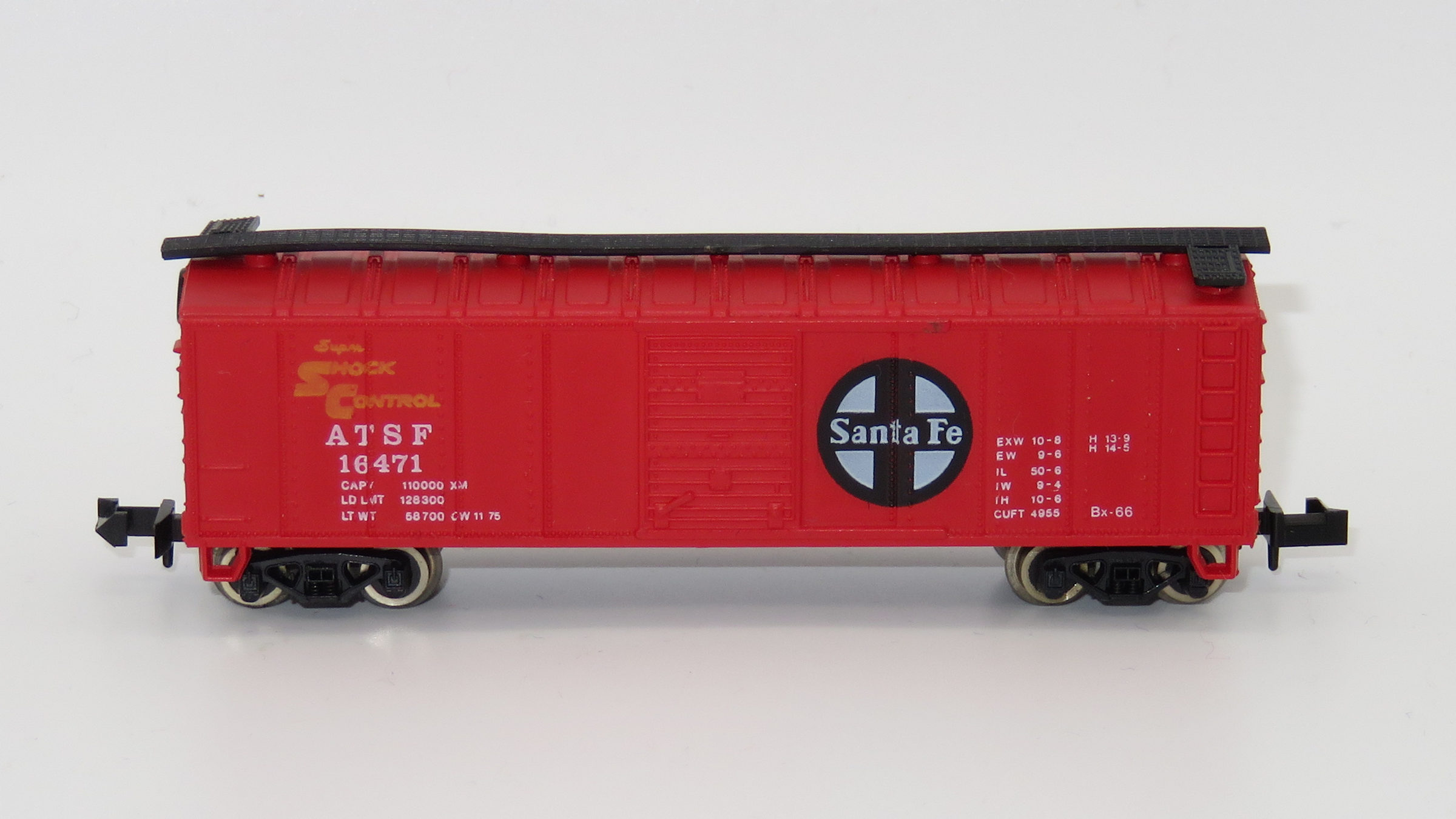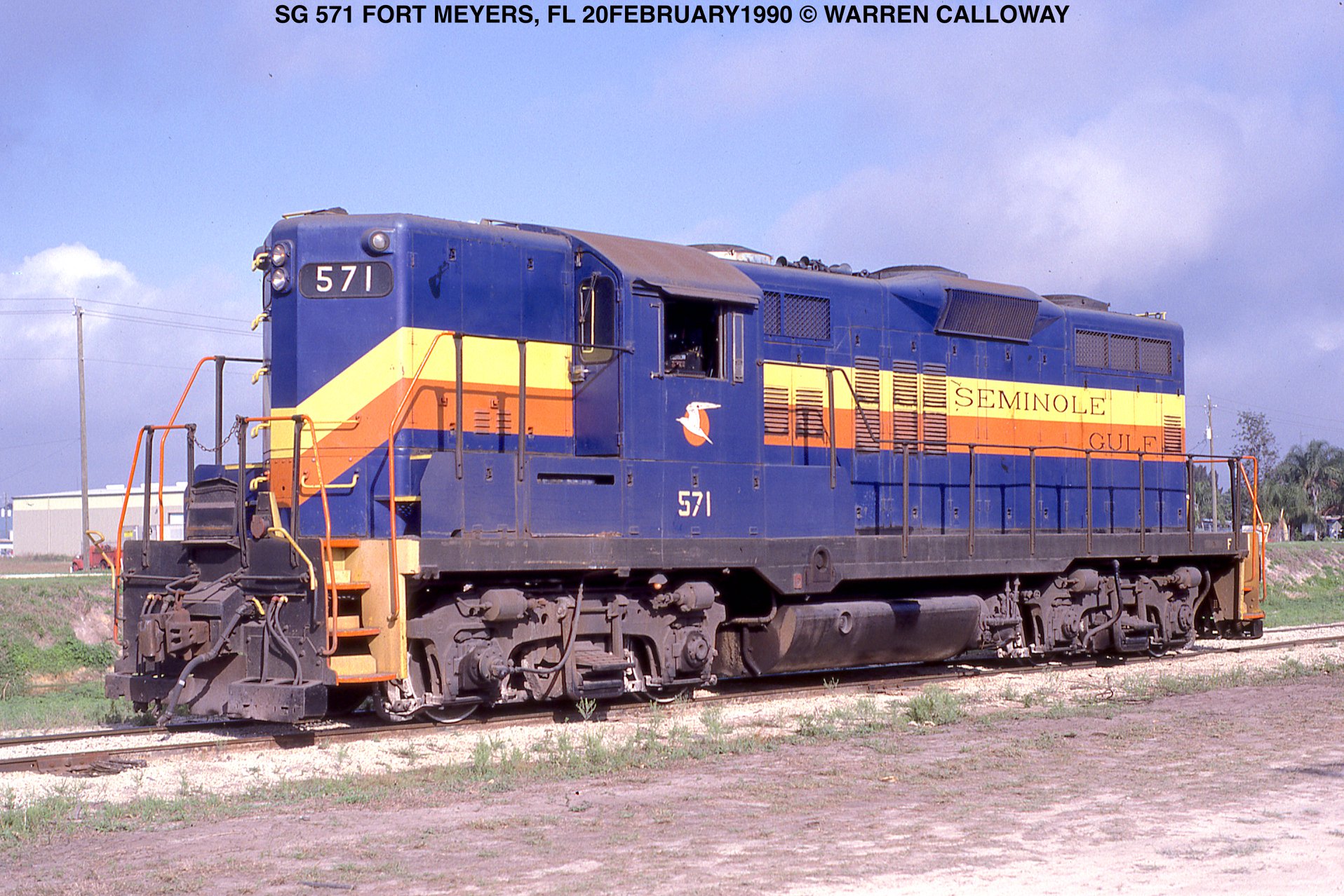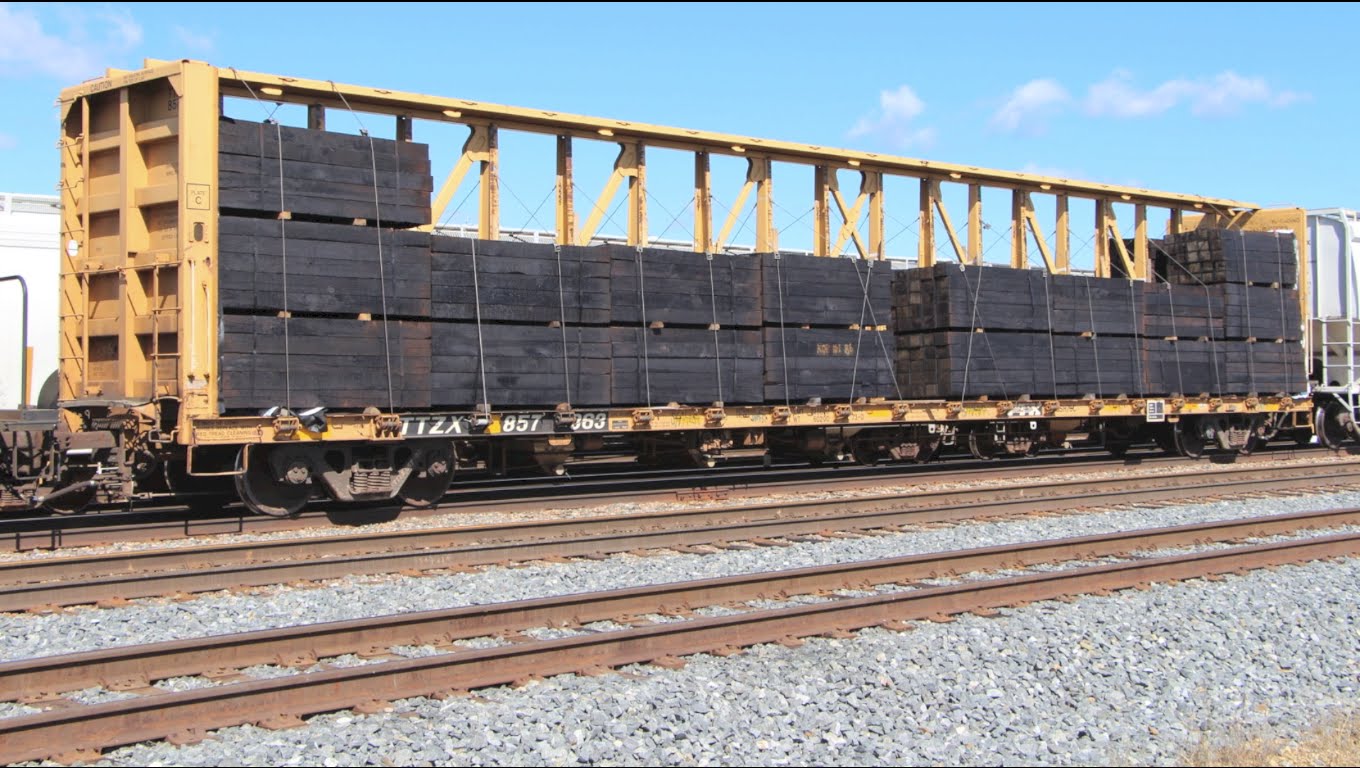Specific Item Information: Standard Panel
Prototype History: Centerbeam flatcars, centerbeams, center partition railcars or commonly referred to as lumber racks are specialty cars designed for carrying bundled building supplies such as dimensional lumber, wallboard, and fence posts. They are essentially bulkhead flatcars that have been reinforced by a longitudinal I-beam, often in the form of a Vierendeel truss, sometimes reinforced by diagonal members, but originally in the form of stressed panels perforated by panel-lightening "opera windows", often oval, egg-shaped or rectangular. They must be loaded symmetrically, with half of the payload on one side of the centerbeam and half on the other to avoid tipping over.
Road Name History:  Plum Creek Timber Company, Inc. was a timberland owner and manager, as well as a forest products, mineral extraction, and property development company, until it merged with Weyerhaeuser Company. It was headquartered in Suite 3100 at 601 Union Street in Seattle.
Plum Creek Timber Company, Inc. was a timberland owner and manager, as well as a forest products, mineral extraction, and property development company, until it merged with Weyerhaeuser Company. It was headquartered in Suite 3100 at 601 Union Street in Seattle.
Plum Creek was spun off from Burlington Resources as a master limited partnership (MLP) on June 8, 1989. Burlington Resources was created from the Burlington Northern railroad's natural resources holdings in 1988. Plum Creek Timber is heir to some of the 47 million acres (19,000,000 ha) of timberland originally granted by the federal government to the Northern Pacific Railway in the 1860s, and most of Burlington's lands were originally purchased, or otherwise acquired as timberland. The MLP converted to a real estate investment trust on July 1, 1999 in order to obtain tax and accounting advantages available to real estate developers.
Plum Creek Timber produces a line of softwood lumber products, including common and select boards, studs, edge-glued boards, and finger-jointed studs. These products are targeted to domestic lumber retailers, such as retail home centers, for use in repair and remodeling projects. These products are also sold to stocking distributors for use in home construction. The company also does mineral extraction, natural gas production, and deals with communication and transportation rights of way. As of December 31, 2014, the company owned and managed approximately 6.58 million acres (2,660,000 ha) of timber lands in 19 states, as well as owned and operated five wood product conversion facilities in the northwest U.S.
On November 8, 2015, it was announced that Plum Creek would be bought by Seattle-based Weyerhaeuser for $8.4 billion, forming the largest private owner of timberland in the United States.[4] The transaction closed on February 19, 2016.From Wikipedia

Plum Creek was spun off from Burlington Resources as a master limited partnership (MLP) on June 8, 1989. Burlington Resources was created from the Burlington Northern railroad's natural resources holdings in 1988. Plum Creek Timber is heir to some of the 47 million acres (19,000,000 ha) of timberland originally granted by the federal government to the Northern Pacific Railway in the 1860s, and most of Burlington's lands were originally purchased, or otherwise acquired as timberland. The MLP converted to a real estate investment trust on July 1, 1999 in order to obtain tax and accounting advantages available to real estate developers.
Plum Creek Timber produces a line of softwood lumber products, including common and select boards, studs, edge-glued boards, and finger-jointed studs. These products are targeted to domestic lumber retailers, such as retail home centers, for use in repair and remodeling projects. These products are also sold to stocking distributors for use in home construction. The company also does mineral extraction, natural gas production, and deals with communication and transportation rights of way. As of December 31, 2014, the company owned and managed approximately 6.58 million acres (2,660,000 ha) of timber lands in 19 states, as well as owned and operated five wood product conversion facilities in the northwest U.S.
On November 8, 2015, it was announced that Plum Creek would be bought by Seattle-based Weyerhaeuser for $8.4 billion, forming the largest private owner of timberland in the United States.[4] The transaction closed on February 19, 2016.From Wikipedia
Brand/Importer Information:  Originally Red Caboose was a manufacturer of HO and N Scale model railroading items. It was located in Mead, Colorado, and was founded in 1990 by Leon Fairbanks.
Red Caboose manufactured highly accurate, well detailed N, HO, and O Scale freight cars and locomotives.
Originally Red Caboose was a manufacturer of HO and N Scale model railroading items. It was located in Mead, Colorado, and was founded in 1990 by Leon Fairbanks.
Red Caboose manufactured highly accurate, well detailed N, HO, and O Scale freight cars and locomotives.
Red Caboose closed its doors in January of 2015. Red Caboose N Scale has been sold to Fox Valley Models and HO was sold to InterMountain Railway. Many of the Red Caboose toolings have seen re-releases from Fox Valley since the acquisition. We just wish they would clean up the underframes. Red Caboose always went light on the details where they thought people wouldn't look.

Red Caboose closed its doors in January of 2015. Red Caboose N Scale has been sold to Fox Valley Models and HO was sold to InterMountain Railway. Many of the Red Caboose toolings have seen re-releases from Fox Valley since the acquisition. We just wish they would clean up the underframes. Red Caboose always went light on the details where they thought people wouldn't look.
Manufacturer Information: While they were in business, Red Caboose split its production runs between the US and China. Which models were produced where was a function of which body style and which run. Furthermore, which Chinese company was used for production is something we would love to find out.
Item created by: CNW400 on 2021-02-15 12:41:35. Last edited by CNW400 on 2021-02-15 16:36:12
If you see errors or missing data in this entry, please feel free to log in and edit it. Anyone with a Gmail account can log in instantly.
If you see errors or missing data in this entry, please feel free to log in and edit it. Anyone with a Gmail account can log in instantly.


